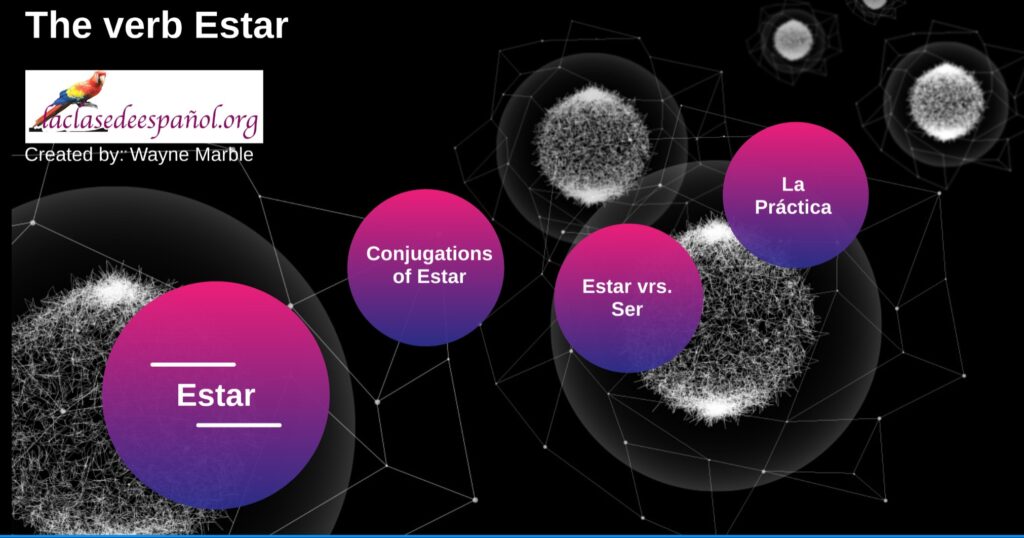Unidad 2: Module 2.4
Using the Verb Estar

Overview
In our first unit you learned about the verb ser (to be). In this module you will learn about the verb estar, which also means (to be). While ser and estar both mean (to be), they are used differently. Also, the verb estar is irregular meaning that it does not conjugate the same as other AR verbs.
Completing this Module will help you:
- understand the basics of when to use estar vrs. ser.
- learn how to conjugate the verb estar correctly.
- learn how to say where something or someone is located.
- learn to say how someone is feeling and how they are doing.
Click on the picture to open the slides about the verb estar.
Learning Path
Go through the slides and learn how to use the verb estar.
Select the conjugation of estar that agrees with each subject pronoun.
Click the chart and print out a copy of it. Then click the items and print a copy. Cut out the items and paste them onto the chart in the appropriate places according to the instructions below. Wright your name on your finished product, then take a picture of the finished product and attach it to the corresponding assignment on Schoology.
- La mochila está al lado de la regla, a la izquierda.
- La regla está entre las mochilas y las carpetas.
- Los libros están encima de las carpetas.
- La calculadora está cerca de de los libros y encima de la regla.
- La calculadora está entre los libros y el borrador.
- El borrador está debajo de los crayones.
- El cuaderno está debajo del borrador y a la izquierda.
- El cuaderno está encima del papel.
- Los bolígrafos están a la derecha del papel.
- Los marcadores están debajo las carpetas.
- Los pegamentos están cerca de los bolígrafos y el marcador.
- El clip está al lado de los crayones y no está encima de la calculadora.
- Las tijeras están cerca del cuaderno y lejos del marcador.
- El reloj está encima del libro.
- El lápiz está a la derecha de los crayones.






